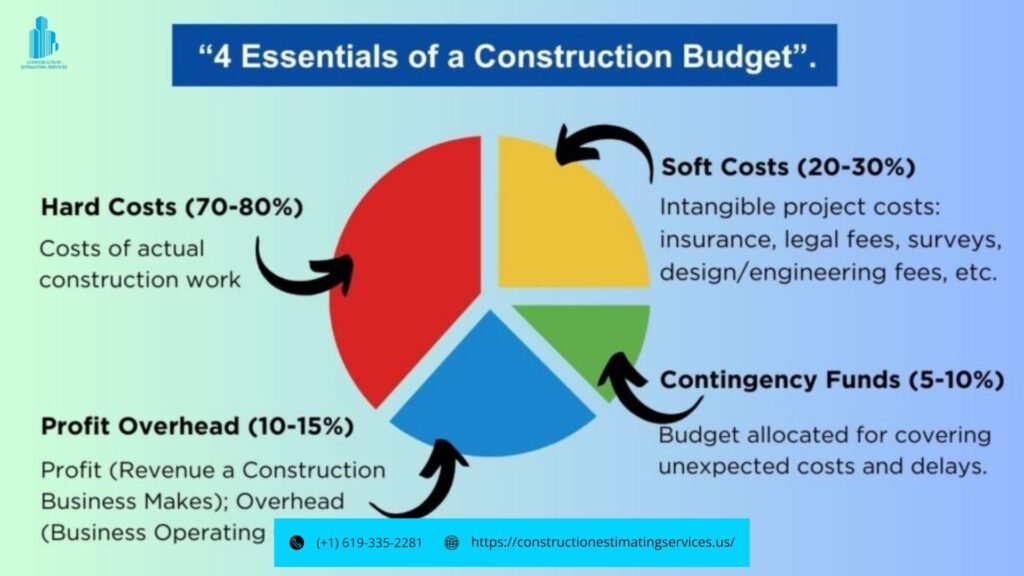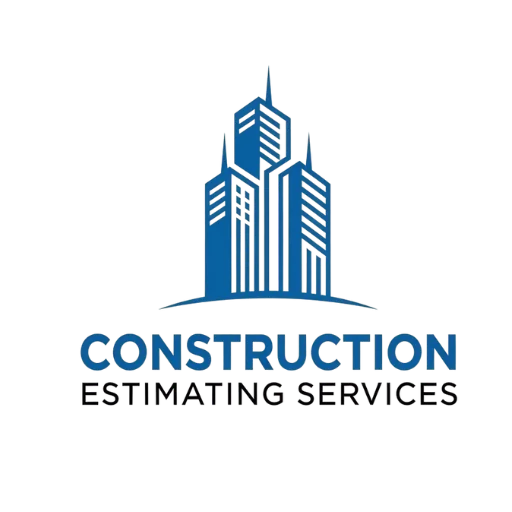Ever watched a construction project budget crumble right before your eyes? You kick things off with a solid number in mind—materials, labor, permits, all lined up like ducks in a row. You’re feeling confident, maybe even a little smug. Then, out of nowhere, the wheels fall off. Prices shoot up, surprises pile on, and suddenly, that perfect budget is a distant dream, leaving you scrambling to figure out what hit you.
If you’ve been around the construction game long enough, this isn’t news—it’s a rite of passage. But here’s the kicker: These budget blowouts aren’t just bad luck. They’re predictable slip-ups, mistakes we keep making because they hide in plain sight. The good news? They’re fixable. Let’s dive into the top five culprits that can tank your finances and, more importantly, how to patch them up before they drain your profits dry.
Mistake #1: Estimating Costs With a Blindfold On
What’s the Worst That Could Happen?
Imagine this: A contractor lands a sweet deal, pumped about the numbers. They’ve got concrete pegged at $130 per cubic yard—sounds like a steal, right? Fast forward to order day, and bam—it’s $160 per cubic yard. Multiply that by thousands of yards, and you’re staring at a budget in full-on meltdown mode. One little misstep, and the profit’s gone.

Why This Happens
It’s not rocket science—it’s just sloppy prep. Here’s what trips people up:
- Old Data: Relying on last year’s prices instead of what’s hot off the press.
- Market Blindness: Ignoring seasonal swings or supply chain chaos that jack up costs.
- Guessing Games: Throwing out numbers without checking with suppliers first.
I’ve seen it happen—a buddy of mine bid a job based on six-month-old lumber quotes. By the time he broke ground, prices had spiked 20%. He ate the difference and swore he’d never wing it again.
Fix It Before It Costs You
Don’t let outdated numbers burn you. Here’s how to keep it real:
- Call Suppliers Early: Before you even think about finalizing that estimate, pick up the phone. Last month’s $130 concrete could be today’s $160—know before you bid.
- Add a Buffer: Toss in a 5-10% cushion for price hikes. It’s not paranoia—it’s survival.
- Get a Pro: Work with a construction cost estimator who’s got their finger on the pulse. They’ll spot hidden costs you might miss.
What Contractors Are Asking Right Now
- How do I get the most accurate construction cost estimate? Talk to suppliers and use real-time data—yesterday’s numbers won’t cut it.
- Why do construction material prices change so fast? Supply chains, demand, even weather—2025’s a wild ride.
- What’s the safest way to bid without losing money? Build in buffers and double-check every quote.
Mistake #2: Labor Costs That Sneak Up On You
Think Workers Will Stay on Schedule? Think Again.
Picture a builder hiring a crew, figuring five months will do the trick. Then life happens—rain slows the pace, a couple of seasoned guys bail, and now you’ve got greenhorns taking twice as long. Payroll balloons, overtime kicks in, and that tidy budget? It’s a financial migraine waiting to happen.
Why This Happens
Labor’s a wild card, and we keep betting on the best-case scenario:
- Overoptimism: Assuming every worker’s a machine, cranking at top speed.
- Shortages: Skilled hands are scarce, so you’re stuck paying premium rates for whoever’s left.
- Overtime Surprise: No one planned for it, but now it’s the only way to hit that deadline.
A site manager I know learned this the hard way. His crew hit a snag, worked late to catch up, and racked up $15,000 in overtime in a month. “Should’ve seen it coming,” he grumbled.
What You Can Do About It
Don’t let labor costs blindside you—plan smarter:
- Build in Buffer Time: Delays are inevitable—pad your schedule by a week or two.
- Use Real Rates: Base productivity on what your crew actually delivers, not some dream scenario.
- Backup Plan: Line up temp workers or subs so turnover doesn’t leave you high and dry.
What’s on Contractors’ Minds?
- Why are labor costs in construction so unpredictable? Weather, turnover, shortages—it’s a perfect storm.
- How can I prevent delays caused by workforce issues? Extra time and a Plan B crew.
- What’s the best way to calculate payroll in a construction bid? Factor in real output and a little wiggle room.

Mistake #3: Change Orders That Turn Into Budget Nightmares
Ever Had a Client Change Their Mind? Of Course You Have.
You’re halfway through a commercial build, cruising along, when the owner pipes up: “Hey, let’s swap the flooring.” Original budget? $5 per square foot. New pick? $12 per square foot. Across 20,000 square feet, that’s a $140,000 gut punch—straight to your bottom line.
Why This Happens
Change orders are chaos magnets:
- No Process: Without a system, changes spiral out of control.
- Client Cluelessness: They think a tweak’s no big deal—until the bill hits.
- No Prep: Contractors don’t price out “what-ifs” ahead of time.
I’ve seen a contractor lose $50,000 because a client added a skylight mid-build with no paperwork. “Never again,” he said, shaking his head.
How to Stay in Control
Take the reins before changes derail you:
- Set a Policy: Get a signed change order process in place—day one.
- Pre-Quote Options: Show clients alternate costs upfront—$5 vs. $12 flooring—so they know what’s at stake.
- Document Everything: No work starts until it’s in writing and approved.
What Contractors Want to Know
- How do I protect my budget from last-minute changes? Lock down a process and stick to it.
- Who pays for construction change orders? The client—if you’ve got it in writing.
- What’s the right way to document project modifications? Signed forms, clear costs, no shortcuts.
Mistake #4: Thinking Permits Are Just a Small Fee
Regulations Don’t Care About Your Budget.
A contractor’s ready to roll—bid won, crew lined up. Then a new zoning rule demands an environmental report. That “small” permit fee? Now it’s thousands, plus weeks of delays while the crew twiddles their thumbs and the clock ticks on rental costs.
Why This Happens
Permits are a minefield:
- No Homework: Skipping the research on local rules.
- Fixed Cost Myth: Thinking permits are a set price when they shift by project.
- Delay Blindspot: Forgetting that holdups mean lost cash flow.
One guy I know got hit with a $10,000 fine for starting without a stormwater permit he didn’t even know existed. Ouch.
How to Avoid This Mess
Don’t let permits sink you:
- Research Early: Check city regs before you bid—rules change fast.
- Pad the Timeline: Budget extra weeks for inspections or surprises.
- Hire a Pro: A compliance specialist can spot traps you’d miss.
What Contractors Are Asking
- How much do construction permits really cost? Hundreds to thousands—depends on the job and location.
- What happens if a project starts without a permit? Fines, stop-work orders, or worse.
- What’s the best way to speed up the permit process? Prep early and lean on an expert.
Mistake #5: Not Locking in Material Prices Early
A Supply Shortage Can Wipe Out Profits Overnight.
A contractor budgets $50,000 for lumber on a housing project. Then a supply crunch hits, prices jump 40%, and that $50,000 turns into $70,000. The bid’s locked in—guess who’s eating that $20,000 difference? Yep, the contractor.
Why This Happens
It’s a gamble we keep losing:
- Price Assumptions: Thinking today’s rate holds tomorrow.
- Shortage Shock: Demand spikes catch everyone off guard.
- No Safety Net: Contracts without price protection clauses.
A friend dodged this bullet once by locking in steel early—saved $15,000 when prices spiked. “Luckiest call I ever made,” he said.
How to Stay Ahead of the Game

Beat the market at its own game:
- Lock It In: Sign bulk orders ASAP to freeze prices.
- Spread the Risk: Use multiple suppliers so one shortage doesn’t kill you.
- Clause Up: Add price adjustment terms to your contracts—share the pain if costs soar.
What Contractors Need to Know
- Why are construction materials so expensive? Supply chains are a mess—2025’s no exception.
- How can I lock in prices to protect my budget? Bulk deals and early contracts.
- What’s the safest way to buy bulk materials without risk? Diversify suppliers and negotiate terms.
Stop Losing Money—Start Bidding Smarter
Here’s the brutal truth: Most contractors don’t tank their budgets with one epic fail. It’s the slow bleed of little mistakes—fixable ones—that quietly chew through their cash. Estimating blind, underplanning labor, fumbling change orders, skimping on permits, and leaving material costs to chance—it’s a recipe for profit loss every time.
But it doesn’t have to be. Flip the script with these moves:
- Estimate Smart: Use fresh data and buffers—no more guesswork.
- Plan Labor Realistically: Delays happen; be ready.
- Control Changes: Lock down a process and pre-quote options.
- Nail Permits: Research and pad for surprises.
- Secure Materials: Lock in prices before the market bites.
Construction’s tough enough without handing your profits away. It’s not just about finishing the job—it’s about finishing it with money in your pocket. Tired of budgests blowing up? Time to bid like you mean it and build like a pro.
Looking for Construction estimation? contact us: Estimating Services
Frequently Asked Questions
How Do I Stop Guessing My Way Into Construction Project Budget Mistakes?
Answer: Oh man, we’ve all been there—throwing out numbers and hoping they stick. That $130 to $160 concrete jump? It’s what happens when you skip the homework. Call your suppliers before you bid—get today’s prices, not last month’s. Toss in a 5-10% buffer for surprises, and maybe even team up with a cost estimator. No more blindfold estimates, just solid footing.
Why Do Labor Costs Always Throw My Budget Off Track?
Answer: It’s maddening, right? You plan for five months, then bam—rain or a couple of quitters turn it into a payroll mess. It’s not you; it’s overoptimism and shortages. Pad your schedule with buffer time, base worker output on real-life pace (not superhero mode), and keep a backup crew on speed dial. That way, delays won’t sting as bad.
What’s the Deal With Change Orders Wrecking My Finances?
Answer: Clients changing their minds mid-build—like that $5 to $12 flooring switch across 20,000 square feet—is a budget killer. Without a process, it’s chaos. Set up a signed change order policy from day one, show clients upgrade costs upfront, and don’t lift a finger until it’s in writing. You’ll save yourself a $140,000 headache.
How Can I Avoid Permit Surprises That Bust My Budget?
Answer: Permits feel like a small fry until a new rule—like an environmental report—drops thousands on you. Been there? Check local regs before you bid, not after. Budget a few extra weeks for inspections, and if it’s a big job, get a compliance pro to sniff out traps. No more “oops” moments holding up your cash flow.
Why Does Not Locking in Material Prices Hurt So Much?
Answer: That $50,000 lumber budget jumping to $70,000 because of a shortage? It’s a gut punch—especially when the bid’s locked. Prices aren’t stable, and shortages hit hard. Lock in bulk orders early, spread your bets with multiple suppliers, and sneak a price adjustment clause into your contract. One smart move, and you’re not eating that $20,000 loss.
How Do I Get Ahead of Construction Project Budget Mistakes Before They Start?
Answer: It’s like playing defense—spot the weak spots first. Look at past jobs: Where’d you overrun? Then use fresh supplier quotes, pad your labor timeline, and nail down a change order system. Permits and materials? Research and lock ‘em in. It’s not fancy—it’s just staying one step ahead of the chaos.
Why Are Construction Material Prices So Hard to Pin Down?
Answer: Tell me about it—feels like they shift every time you blink! Supply chains are shaky, demand’s wild, and 2025’s not calming down. That’s why that concrete went from $130 to $160. Don’t guess—call suppliers, track trends, and build a buffer. It’s less “why me?” and more “I’ve got this.”
What’s the Best Way to Handle Last-Minute Client Changes Without Losing Money?
Answer: Oh, the classic “Can we tweak this?” moment—like that flooring fiasco. You’re not stuck if you’ve got a plan. Day one, set a change order policy—signed, sealed, delivered. Quote options early ($5 vs. $12 flooring), and keep everything documented. It’s your shield against a six-figure surprise.
How Do I Know If My Labor Estimates Are Realistic?
Answer: Ever feel like you’re betting on a unicorn crew that never slows down? We overestimate—every time. Ditch the rose-colored glasses: Use your last job’s pace, not some perfect-world guess. Add a week or two for hiccups, and have subs ready if someone bails. No more payroll shocks sneaking up on you.
What Can I Do If Permits Delay My Project and Eat My Profits?
Answer: Delays are the worst—like that zoning rule stalling everything. Don’t just cross your fingers—dig into city rules before you bid. Budget extra time for the red tape dance, and if it’s hairy, call in a permit whiz. One contractor I know saved weeks (and thousands) by planning ahead. You can too.












